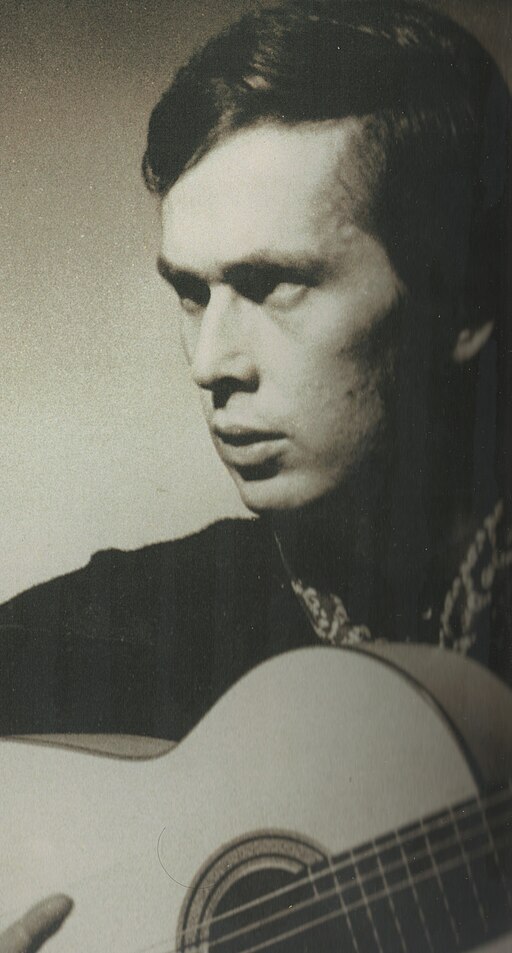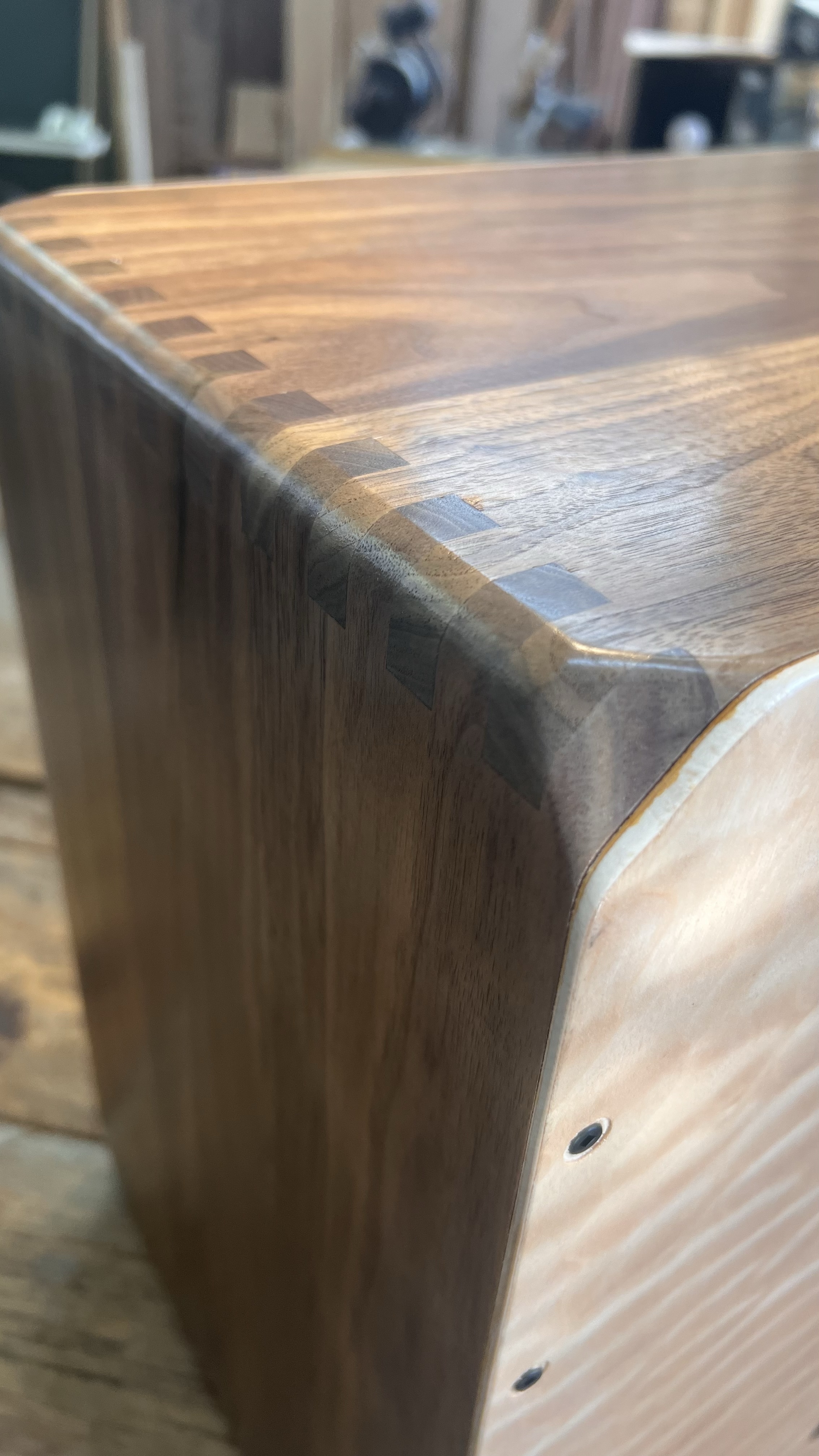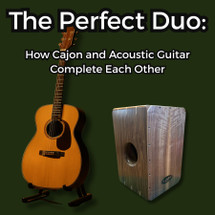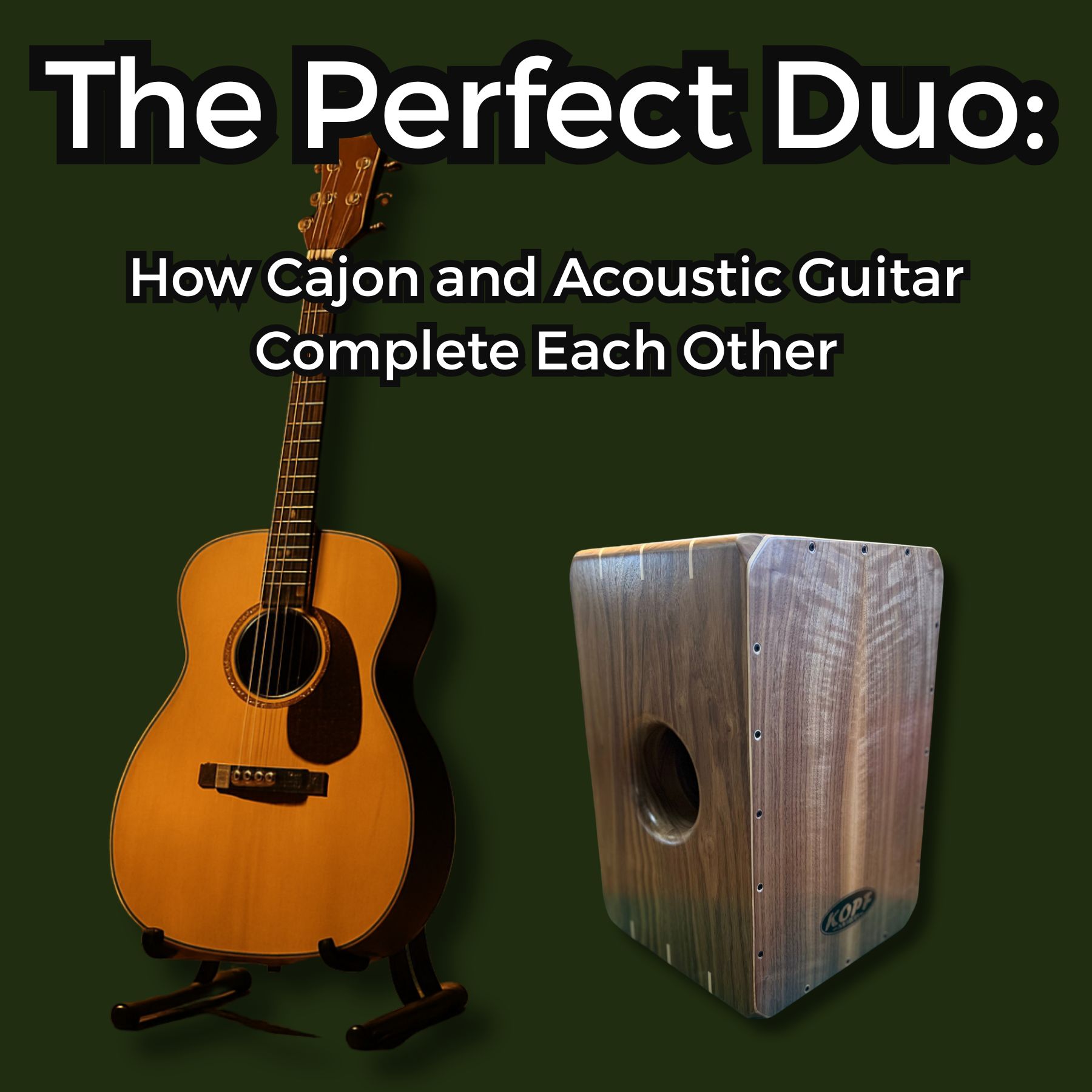Posted by Stephen Head on 22nd Oct 2025
The Perfect Duo: How Cajon and Acoustic Guitar Complete Each Other
The Perfect Duo: How Cajon and Acoustic Guitar Complete Each Other
Introduction
Some instruments simply belong together. The cajon and the acoustic guitar have developed a partnership that feels inevitable. Both are acoustic, made from wood, and respond directly to the player’s touch. They create a complete sound — rhythm, tone, and movement — without the need for anything else.
This isn’t a pairing that was engineered or designed. It evolved naturally, out of tradition and necessity. To understand why they fit so well, it helps to look at where that connection began.
1. Where It Started
The modern relationship between cajon and acoustic guitar traces back to flamenco. (For more on the instrument’s origins, see The Cajon: The History of the Beatbox Drum)
In 1977, guitarist Paco de Lucía visited Peru and saw the cajon for the first time.

He recognized immediately that its sharp, percussive tone and wooden resonance could complement the flamenco guitar. When he brought one home to Spain, it fit almost instantly.
The cajon replaced or supplemented the handclaps and footwork that had always carried the rhythm in flamenco. It gave guitarists a fuller, more balanced sound without losing the organic character of the music. From that point on, the cajon became a permanent part of the flamenco ensemble — and that’s where the partnership between the two instruments began.
2. Shared Construction and Response
Both instruments come from the same world — wood, air, and resonance. The acoustic guitar projects through a hollow body and a vibrating top. The cajon projects through its wooden shell and resonant faceplate.

They both rely entirely on the player’s hands for tone and control. (You can read more about this natural responsiveness in Exploring the Versatility and Artistry of the Cajon) That common design makes them naturally compatible. Neither overpowers the other; both respond to dynamics, position, and touch. When played together, the sound is balanced and cohesive because they’re built from the same principles of resonance.
3. Complementary Roles
The acoustic guitar covers melody, harmony, and rhythm. If you’re interested in how percussion developed this role over centuries, check out Hand Drums: A Fundamental Part of Music History. The cajon defines the pulse and reinforces the low-end foundation. Each fills the gaps the other leaves open.
It’s not about one leading and one following. It’s about how each instrument supports the other’s strengths. The guitar provides sustain and tone; the cajon provides definition and timing. Together, they form a complete frequency range without amplification or additional instruments.
4. Why It Works in Modern Settings
That same balance that made the pairing successful in flamenco still applies today.
In acoustic duos, worship sets, or small venues, the cajon and acoustic guitar create a full and natural sound that fits the space. There’s no need for a drum kit or heavy production. The dynamic range is controlled directly by the players.
It’s an efficient setup — portable, quick to mix, and expressive. The sound is warm, clear, and musical because it’s coming from two instruments that share the same acoustic language.
5. The Connection Between Player and Builder
This duo also reflects a deeper relationship between the instruments themselves. Both are born from craftsmanship — the shaping of wood to create resonance. Every choice in material, thickness, and design affects how they respond together.
When a cajon is built well, it behaves like an acoustic instrument, not just a percussion box. It reacts to tone and phrasing the same way a guitar does. That’s what makes the combination feel natural — it’s not two instruments competing; it’s two pieces of woodworking in conversation.
Closing Thoughts
The partnership between the cajon and acoustic guitar didn’t happen by accident. It started with a flamenco guitarist who saw what was possible, and it continues because it simply works.
Both instruments are honest — they respond to touch, not technology. They share a natural balance that feels complete on its own. That’s why this pairing has lasted for nearly fifty years and why it still defines so much of today’s acoustic music.


